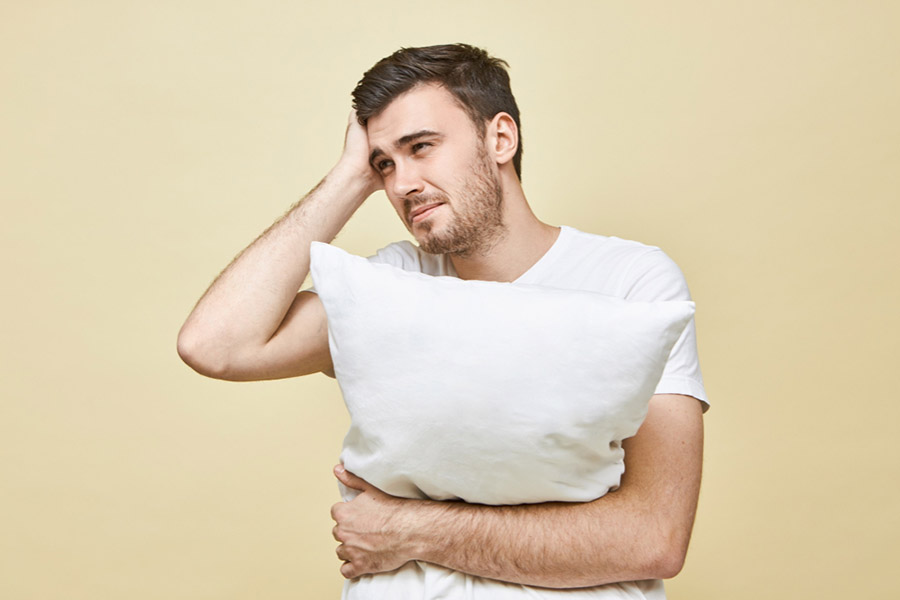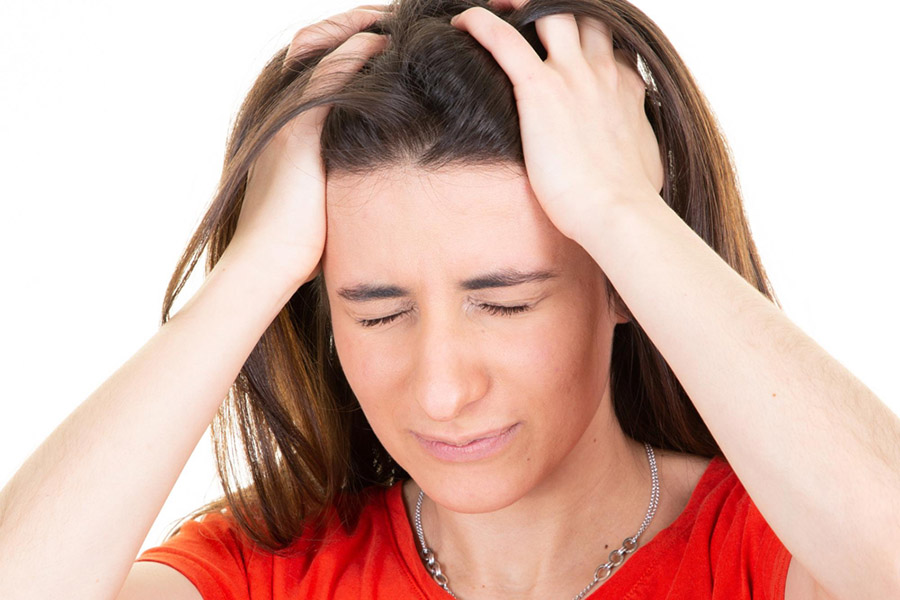Bruxism, A Mandibular Parafunction
Bruxism is a jaw disorder characterized by involuntary grinding or clenching of the teeth. It is a mandibular parafunction, since it is a movement that is carried out without fulfilling any masticatory, swallowing or speech function. This grinding, in addition to being unpleasant for the bruxer, can cause muscle pain and damage the teeth.
The individual who suffers from this condition is generally referred to as a “bruxer”.

Teeth That Grind and Clench
There are two categories of bruxism: dynamic bruxism and static bruxism.
When a person grinds his or her teeth, the teeth rub together in a side-to-side or front-to-back motion, producing an unpleasant sound. Teeth grinding is therefore called dynamic bruxism, as opposed to teeth clenching.
Clenching is characterized by vertical pressure, but without lateral movements: this is why it is called static bruxism. It does not produce any sound, but can have just as many consequences, including muscle pain and headaches.
Bruxism is a jaw disorder: the rubbing or clenching between teeth should not occur when you are not eating. If they occur when there is no chewing function, it is called bruxism. If you suspect that you or a loved one is suffering from bruxism, talk to a member of our team who will be able to refer you and suggest solutions to reduce or stop the grinding, which can have consequences on your dental
Occlusal plaque: a preventive solution to teeth grinding.
The occlusal plaque, also known as bite plate or joint plate, is a transparent plastic tray that covers the upper teeth, the lower teeth or both, depending on the bruxer’s appearance. It is the appliance most often used to protect the teeth from the wear caused by grinding and clenching, as well as to absorb the forces involved.
Accordingly, the consequences of teeth grinding are greatly reduced. Teeth do not get damaged, and therefore do not develop sensitivity. The impact on the jaws is also minimized, preventing the patient from muscle pain and spasms. The plaque is most often used at night, as bruxism is most common at this time.
Who Can Be Affected?
Although bruxism can become a chronic disorder, many people will suffer from it at some point in their lives; it can be a temporary disorder. Slightly more frequent in children (14%), it also affects adults and the elderly (11%) on a regular basis; there is no distinction between men and women, who are equally affected.
However, studies have shown that bruxism tends to decrease with age. The greatest number of cases is found in the 20-50 age group.
Bruxism and Its Consequences
Bruxism, which occurs more frequently at night, is most often considered a sleep disorder. Other disorders can accompany bruxism at night, including snoring and even sleep apnea, i.e., breathing problems.
According to some researchers, it could even be the cause of concentration and learning problems, especially in young people.

Bruxism tends to cause a tightening of the masticatory muscles, thus leading to muscular pains, but also, sometimes, to a vicious circle. In fact, in chronic bruxers, this increased tightness can lead to increased clenching or grinding, which in turn will lead to even more tightness. It can be difficult to break out of this cycle, but your dentist will be able to advise you on what to do to lessen the consequences.
A Nocturnal Disease, But Also a Diurnal One
If the majority of researchers consider bruxism to be a nocturnal disease, it is mainly because in 80% of cases it occurs most often at this time. The remaining 20% are daytime bruxers, i.e., people who brux during the day.
Treatment is difficult for nocturnal bruxers, since the movement occurs during their sleep. Light sleep phases are the main time when bruxism occurs, as body movements are more frequent during these periods.
The movement is totally involuntary and therefore impossible to control, especially since noise and pressure do not usually wake the bruxer. As a result, the pressure is stronger in these unconscious bruxers, and can lead to more consequences.
Daytime bruxers can more easily deal with the problem, being in an awake state: they are aware of it and can feel the clenching or grinding of the teeth. By identifying the causes and becoming aware of the gesture, they will be able to control it and avoid the consequences.
Causes of teeth grinding: Causes of teeth grinding or clenching are numerous; they are still being studied today. Researchers have not yet identified all of them, but some are now recognized and accepted by oral health professionals.
Stress, anxiety, hyperactivity and competitiveness are often linked to teeth grinding

The most common cause seems to be psychosocial problems, which are experienced during the day and are expressed through stress, anxiety, competitiveness or hyperactivity.
Why can teething troubles that occur during waking hours have an impact on night-time behaviour? Simply because nocturnal bruxers may not manage their stress well, or their stress level may be higher than average during the day.
It is not so surprising that teeth grinding or clenching can occur involuntarily during sleep when an individual does not manage his or her stress well, because one of the signs of the stress felt during awakening is teeth clenching! Indeed, these movements can occur when the lower jaw remains tense instead of relaxing at night while the person sleeps.
Students represent a population particularly affected by bruxism mainly during exam period because of their above-normal stress level.
Finally, if you suffer from bruxism periodically or temporarily, our dentists can suggest that you wear an occlusal plaque, which can lessen the impact of grinding on your teeth and muscles. Our professionals will take the time to discuss with you the problems that are at the source of your bruxism. If the problem is due to a bad bite, we will be able to recommend a treatment plan.
